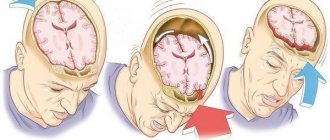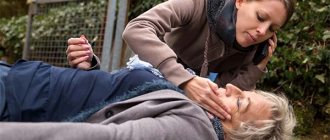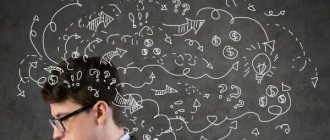ASSESSMENT OF FUNCTIONAL ASYMMETRY USING DIFFERENT METHODOLOGICAL APPROACHES
Published in 2015, BIOLOGICAL SCIENCES, Issue August 2015 | No comments yet
Anisimova N.V.
Postgraduate student of the Department of Biology and Fundamentals of Medical Knowledge of the Chuvash State Pedagogical University named after I.Ya. Yakovleva, Cheboksary
ASSESSMENT OF FUNCTIONAL ASYMMETRY USING DIFFERENT METHODOLOGICAL APPROACHES
annotation
The purpose of this work is to assess functional asymmetry (FA) using N.N. Bragina and T.A. Dobrokhotova and the Edinburgh questionnaire. The study involved 37 schoolchildren aged 7 to 16 years. According to the results obtained using the methods of N.N. Bragina and T.A. Dobrokhotova to determine manual asymmetry, 30 schoolchildren are right-handed, 4 are left-handed and 3 are ambidextrous. According to the results of the Edinburgh testing, it was revealed that 31 schoolchildren have a leading right hand, 5 schoolchildren are left-handed and 1 is ambidextrous. The results of the correlation analysis show incomplete consistency between the indicators that determine physical activity using different methods.
Key words: functional asymmetry (FA), motor asymmetry, sensory asymmetry, asymmetry coefficient, “handedness”.
Anisimova NV
The graduate of department of biology and basic medical knowledge Chuvash state pedagogical university named by IY Yakovlev, Cheboksary
THE FUNCTIONAL ASYMMETRY ASSESSMENT BY DIFFERENT METHODS
Abstract
The purpose of this research is the functional asymmetry assessment by means of Edinburgh test and Bragina and Dobrohotova tests. Functional asymmetry research was held among 37 schoolchildren in age from 7 to 16. According to the results the padding block questions development by Bragina and Dobrohotova, 30 students are right-handed, 4 are left-handed and 3 are the ambidexters. , we have identified by the Edinburgh questionnaire, that 31 students have the leading right hand, 5 students are left-handed and 1 is the ambidexter. The results of correlation analysis show the partial coherence between FA indexes.
Keywords: functional asymmetry of brain, motor asymmetry, sensory asymmetry, index of asymmetry, handedness.
Relevance of the problem under study. The most important manifestations of FA are structural and functional differences between the left and right hemispheres of the human brain [8]. FA manifests itself in the form of pronounced specificity of information processing, reactivity and cognitive sphere in people with dominance of the right or left hemisphere [7]. To date, science has used two approaches to assess interhemispheric differences: the method of determining “handedness” through a survey (Edinburgh test) [11], and the method of actively identifying motor and sensory asymmetry by N.N. Bragina and T.A. Dobrokhotova [1]. The Edinburgh test is widely used in the world: it is used in the study of behavior [4], emotions [10] and as a preliminary test for selecting participants in neuroimaging studies [3]. Tests to determine the leading limbs and leading eye were used to assess the influence of brain lateralization on intelligence and mathematical abilities [9], to study the adaptive capabilities and physical development of boys and girls, as well as the formation of stress resistance of the body [2], [5]. It follows that both methods are widely represented in modern scientific literature, but we have not found any work that would evaluate the relationship between the results of testing functional asymmetry of the brain using the Edinburgh test and tests for determining motor and sensory asymmetry. Based on this, the purpose of our work is to assess functional asymmetry using N.N. Bragina and T.A. Dobrokhotova and the Edinburgh questionnaire.
Materials and research methods. The study involved schoolchildren from the Municipal Budgetary Educational Institution “Secondary School No. 31 with in-depth study of individual subjects” in Cheboksary, aged from 7 to 16 years, a total of 37 students. The average age was 12±0.4 years.
At the first stage of the study, schoolchildren answered questions from the Edinburgh test [11]. At the same time, their parents were responsible for children under 13 years of age. The Edinburgh questionnaire, adapted by us for schoolchildren, consists of fourteen questions about the preference for using the right or left hand when performing certain actions, such as writing, drawing, sewing, combing hair, brushing teeth, using a spoon or fork, etc. (Table 1).
Table 1 – Questionnaire for students
To determine manual and sensory asymmetry, N.N. tests were used. Bragina and T.A. Dobrokhotova [1].
Functional studies were carried out in the first half of the day, under conditions that meet the hygienic requirements for educational institutions [6]. The study complied with the ethical requirements set out in the Declaration of Helsinki.
The functional asymmetry coefficient was calculated based on answers to the Edinburgh questionnaire using formula (1):
Formula 1),
where H is the coefficient of functional asymmetry, X(i,R) and X(i,L) is the number of “+” signs in the “Right hand” and “Left hand” columns, respectively.
The coefficient of manual asymmetry (CMA) was determined according to formula (2):
formula (2),
where KMA is the coefficient of manual asymmetry, Nп is the number of actions performed by the right hand, Nт is the number of proposed tests.
The sensory asymmetry coefficient was calculated using formula (3):
formula (3),
where Nп is the number of actions performed by the right side of the body, Nт is the number of tests offered.
The total asymmetry is the sum of the KMA and SA coefficients (formula (4)).
formula (4),
where OA is general asymmetry, KMA is the coefficient of manual asymmetry, SA is sensory asymmetry.
Statistical processing of the study results was carried out using the Spearman correlation coefficient.
Research results and discussion. The frequency of occurrence of answer options for Edinburgh test questions is presented in table. 2.
Table 2 - Manual preferences revealed by the results of the Edinburgh test
As follows from the data given in Table 2, students perform most actions with their right hand.
Having analyzed the results obtained during testing using the Edinburgh questionnaire, we came to the conclusion that the majority of children who took part in the study have a pronounced predominance of the right hand: the average value of the asymmetry coefficient is 83.8%, the proportion of schoolchildren with a dominant right hand was 83.8%, with a preference for the left hand when writing and performing various types of work - 13.5%, using both hands with equal success - 2.7%. The distribution of the values of the asymmetry coefficient calculated according to formula 1 is presented in Fig. 1.
Rice. 1 – Individual profiles of “handedness” based on answers to questions in the Edinburgh questionnaire (from left to right – X(i,R), X(i,L), H).
In the course of analyzing tests for motor asymmetry, we found that the majority of students perform tasks with their right hand (83.8% of cases), and the left hand was dominant in only 13.5%. In the course of analyzing the results of tests to identify sensory asymmetry, we found that for the majority of students the leading eye is the right eye (59.5%), and the left is only for 40.5% of students, in 81.1% of cases the leading ear is right.
Based on the coefficient of manual asymmetry, we determined that two children (5.4%) had almost complete left-handedness, the other two schoolchildren had strong left-handedness. The number of ambidextrous people was 3 (8.11%), and the proportion of children who had pronounced right-handedness was 9 (24.32%). In terms of manual asymmetry, the majority of schoolchildren we examined (21 or 56.76%) were strongly right-handed, although we did not find any schoolchildren who performed all tests with their right hand and had a dominant right leg.
The severity of sensory asymmetry was 32.97%. The left sensory fields were dominant in 8 (21.61%) children. The predominance of sensory flows on the right was noted in 29 (77.92%) schoolchildren.
The average value of complete asymmetry was 42.48%: 2 (5.4%) schoolchildren with almost complete left-handedness, 2 (5.4%) with strong left-handedness, 2 (5.4%) ambidextrous, 9 (24.32%) with pronounced right-handedness and 22 (59.46%) with strong right-handedness.
The main objective of our work is to study the relationship between the results of testing functional asymmetry of the brain using various methods by calculating the Spearman correlation coefficient.
The results of the analysis of the relationship between the H coefficient of the Edinburgh questionnaire, on the one hand, and the coefficients of motor and sensory asymmetry according to the method of N.N. Bragina and T.A. Dobrokhotova are presented in Fig. 2.
Rice. 2 – Correlation connections between the coefficient N and the coefficient of motor asymmetry (A), the coefficient of sensory asymmetry (B)
From the data in Figure 2 it follows that there is a statistically significant correlation between the H coefficient and the motor asymmetry coefficient (R = 0.58; P <0.05); We did not find such a connection in the case of sensory asymmetry (R=0.18, P>0.05). This indicates that the results of testing using the Edinburgh questionnaire are not sufficient to obtain a complete picture of functional asymmetry of the brain.
Summary.
The data we obtained indicate left hemisphere dominance in schoolchildren, both according to the results of a study using the methods of Bragina and Dobrokhotova, and according to the results of the Edinburgh questionnaire. Although the coefficient of manual asymmetry and the coefficient of handedness are related to each other, the dominance of the right hand, revealed by the results of answers to questions, and the nature of sensory asymmetry are not consistent with each other. In addition, we noted individual cases of discrepancy between answers to the questionnaire and real preference for the right and left hands. Based on this, we consider it necessary to conduct additional research to improve the Edinburgh questionnaire.
Literature
- Bragina, N. N. Functional asymmetries of man / N. N. Bragina, T. A. Dobrokhotova. – 2nd ed. reworked and additional – M.: Medicine, 1988. – 237 p.
- Lisova N.A. and others. The role of activation processes of the cerebral cortex in the formation of stress resistance in female students with different temperamental characteristics // Siberian Bulletin of Special Education. – 2015. – No. 2(15). – pp. 52-57.
- Mikhailov, I.V. The significance of functional asymmetry in teaching complex purposeful bimanual movements / I.V. Mikhailov, P.V. Tkachenko // Modern high technology. – 2009. – No. 9. – P. 59–
- Pankova N.B., Romanov S.V. Dynamics of behavioral manifestations and quantitative indicators of functional interhemispheric asymmetry in students during the school year // Scientific prospects of the XXI century. Achievements and prospects of the new century // III International Scientific and Practical Conference, Novosibirsk, August 15–16, 2014 – No. 3. Part 5. – Novosibirsk: International Scientific Institute “Educatio”, 2014. – P. 38–42.
- Pulikov A.S. and others. Individual typological characteristics and features of the lateral phenotype in young men // Modern studies of social problems (electronic scientific journal). – 3013. – No. 1. URL: https://sisp.nkras.ru/e-ru/issues/2013.html.
- SanPiN 2.4.2.2821-10 “Sanitary and epidemiological requirements for the conditions and organization of training in educational institutions” dated 03.03.2011.
- Sychev, V. S. Functional asymmetry of the brain. Problems and prospects for solutions / V.S. Sychev // BBK 20 A 437. – P. 197.
- Fokin, V.F. et al. Guide to functional interhemispheric asymmetry / V.F. Fokin // M.: Scientific world. – 2009. – 836 p.
- Khokhlov N.A. Lateral signs, structural-level characteristics of intelligence and mathematical abilities / N.A. Khokhlov, M.S. Kovyazina // Magazine “Asymmetry”. Volume. – 2013. – T. 7. – No. 3. – pp. 32–52.
- Aaron A. et al. Reward, motivation, and emotion systems associated with early-stage intense romantic love // Journal of neurophysiology. – 2005. – T. 94. – No. 1. – pp. 327–337.
- Oldfield RC: The assessment and analysis of handedness: the Edinburgh Inventory. Neuropsychologia 1971 Mar; 9 (1) – pp. 97–113.
References
- Bragina, NN Funkcional'nye asimmetrii cheloveka / NN Bragina, TA Dobrohotova. – 2nd ed. pererab. i dop. – M.: Medicina, 1988. – 237 s.
- Lisova NA i dr. Rol' aktivacionnyh processov kory golovnogo mozga v formirovanii sressoustojchivosti u studentok s razlichnymi temperamental'nymi harakteristikami //Sibirskij vestnik special'nogo obrazovanija. – 2015. – No. 2(15). – S. 52-57.
- Mihajlov, IV Znachenie funkcional'noj asimmetrii pri obuchenii slozhnym celenapravlennym bimanual'nym dvizhenijam / IV Mihajlov, PV Tkachenko // Sovremennye naukoemkie tehnologii. – 2009. – No. 9. – S. 59–
- Pankova NB, Romanov SV Dinamika v uchebnom godu povedencheskih projavlenij i kolichestvennyh pokazatelej funkcional'noj mezhpolusharnoj asimmetrii u uchashhihsja // Nauchnye perspektivy XXI veka. Dostizhenija i perspektivy novogo stoletija // III Mezhdunarodnaja scientific-prakticheskaja konferencija, Novosibirsk, 15–16 August 2014. - No. 3. Chast' 5. – Novosibirsk: Mezhdunarodnyj Nauchnyj Institut “Educatio”, 2014. – S. 38–42.
- Pulikov AS i dr. Individual'no-tipologicheskaja harakteristika i osobennosti lateral'nogo fenotipa u junoshej // Sovremennye issledovanija social'nyh problem (jelektronnyj nauchnyj zhurnal). – 3013. – No. 1. URL: https://sisp.nkras.ru/e-ru/issues/2013.html.
- SanPiN 2.4.2.2821-10 "Sanitarno-jepidemiologicheskie trebovanija k uslovijam i organizacii obuchenija v obshheobrazovatel'nyh uchrezhdenijah" from 03.03.2011.
- Sychjov, VS Funkcional'naja asimmetrija mozga. Problemy i perspektivy reshenija / VS Sychev // BBK 20 A 437. – S. 197.
- Fokin, VF i dr. Rukovodstvo po funkcional'noj mezhpolusharnoj asimmetrii / VF Fokin // M. : Nauchnyj mir. – 2009. – 836 s.
- Hohlov NA Lateral'nye priznaki, strukturno-urovnevye harakteristiki intellekta i matematicheskie sposobnosti / NA Hohlov, MS Kovjazina // Zhurnal “Asimmetrija”. Tom. – 2013. – T. 7. – No. 3. – S. 32–52.
- Aaron A. et al. Reward, motivation, and emotion systems associated with early-stage intense romantic love // Journal of neurophysiology. – 2005. – T. 94. – No. 1. – pp. 327–337.
- Oldfield RC: The assessment and analysis of handedness: the Edinburgh Inventory. Neuropsychologia 1971 Mar; 9 (1) – pp. 97–113.
Introduction
In recent years, scientific research has shown significant changes in the functional asymmetry of the brain in children.
Until the 70s, the number of left-handed people was constant and amounted to 7-8% of the population [Lokhov M.I. et al., 2005], similar data of 5-10% of 800 examined primary school students from A.V. Semenovich, F.F. Tsyganok, [1995, p.175].
However, unlike Russia, in the USA in the 80s there was already an increase in left dominance to 10-30% [Whitaker, 1983; Hatta, 1988]. This caused surprise and healthy wariness in the scientific community, which had conducted research a decade earlier [Blumstein, et.al., 1975; Teng, 1981; Trachenko O.P., 1995; and etc.]. That is, literary data indicate changes in the structure of laterality in different countries and that this process occurred unevenly.
It turned out that both left- and right-handers are heterogeneous groups. Within each group, lateral signs may differ in the leading arm, leg, ear, eye, electrical axis of the heart, and, finally, the characteristics of brain activity itself [Makaryev I.N., 1995; Martynova S.M., et al., 2006; Semenovich A.V., 2005, p. 158-162, etc.].
In the same 80s, attention was paid to the growing population of left-handed children and children with hidden left-handedness. Their number in the 90s increased to 15-17%. Then reports appeared about a qualitatively different group of children - ambidextrous, “two-handed”. At first, ambidexterity, like left-handedness, was regarded as “inferior development”, or as a variant of developmental disorder. Ten years later, attitudes towards ambidexterity have changed dramatically. Today this is one of the norm options. (Moreover, these changes in the population may help reconsider some approaches to diagnosis and correction in children with ADD/ADHD ).
Such children, apparently, have always existed. It’s just that in past decades their number in population studies was negligible - 1-2%.[4].
In recent years, we have seen an increase in the number of such children. Thus, according to the results of neuropsychological testing of Moscow schoolchildren, [S.M. Martynova et al., 2006] found an increase not only in left laterality, but also an increase in the number of children with no manifestations of asymmetry. The authors note the dominance of the right hemisphere in 1st grade students in 47.8% of cases; 4th grade - 44.8%; 9th grade - in 52.6-66.6% of cases. Dominance of the left hemisphere in 1st grade students is expressed in 34.8% of cases; 4th grade - 37.9%; 9th grade - 10.5%. There was also a significant number of children called by the authors “children with no manifestations of asymmetry”, respectively, in 1st grades - 17.4%, 4th grades - 17.2% and 29.0-36.8% for students 9- x classes. That is, we see an increase in left laterality and ambidexterity compared to the data of the 80s.
Results
We examined 212 schoolchildren from 4 Moscow schools.
Table.






